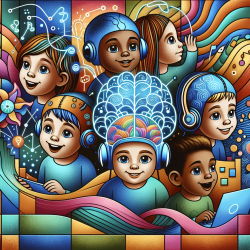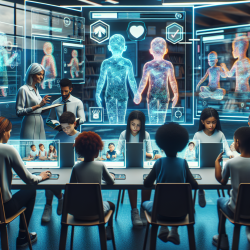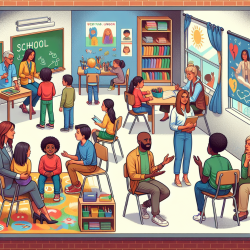Introduction
In the realm of pediatric therapy, the integration of cutting-edge technologies is not just a possibility but a necessity. Brain-Computer Interfaces (BCIs) offer a promising avenue for enhancing therapeutic outcomes for children with neurodevelopmental disorders. As a speech-language pathologist dedicated to data-driven decision-making, I am excited to explore how BCIs can be leveraged to create transformative experiences for young learners.
Understanding Brain-Computer Interfaces
BCIs are sophisticated systems that enable direct communication between the brain and external devices. They can be categorized into invasive and non-invasive types, with the latter being more suitable for pediatric applications due to their safety and ease of use. By interpreting brain signals, BCIs bypass traditional sensorimotor pathways, offering new possibilities for communication and rehabilitation.
BCIs in Pediatric Therapy: A New Frontier
The Sixth International Brain–Computer Interface Meeting highlighted the potential of BCIs in diverse applications, including their use in children with motor or neurodevelopmental disorders. The ability of BCIs to provide real-time feedback and facilitate neuroplasticity makes them a powerful tool in pediatric therapy.
Key Applications for Children
- Communication Enhancement: BCIs can aid children with speech and language impairments by providing alternative communication pathways, thus enhancing their ability to interact with their environment.
- Motor Rehabilitation: For children with motor disorders, BCIs can be integrated with rehabilitation protocols to improve motor function and encourage active participation in therapy.
- Cognitive Development: By engaging children in BCI-driven activities, therapists can stimulate cognitive processes and support learning and memory.
Challenges and Considerations
While the potential of BCIs is vast, there are challenges to consider. Pediatric BCIs require age-specific adaptations due to the ongoing development of children's brains. Ensuring the safety, comfort, and engagement of young users is paramount. Moreover, the integration of BCIs into therapeutic practices demands collaboration between technologists, clinicians, and educators.
The Role of TinyEYE
At TinyEYE, we are committed to pioneering online therapy services that incorporate the latest advancements in neurotechnology. By integrating BCIs into our platform, we aim to enhance the therapeutic experience for children, making therapy more interactive and effective. Our focus on data-driven outcomes ensures that every child receives personalized care tailored to their unique needs.
Conclusion
The future of pediatric therapy lies in the seamless integration of technology and human expertise. BCIs represent a significant leap forward, offering new possibilities for children with neurodevelopmental challenges. By embracing these innovations, we can empower children to achieve their fullest potential.
To read the original research paper, please follow this link: Workshops of the Sixth International Brain–Computer Interface Meeting: brain–computer interfaces past, present, and future.










